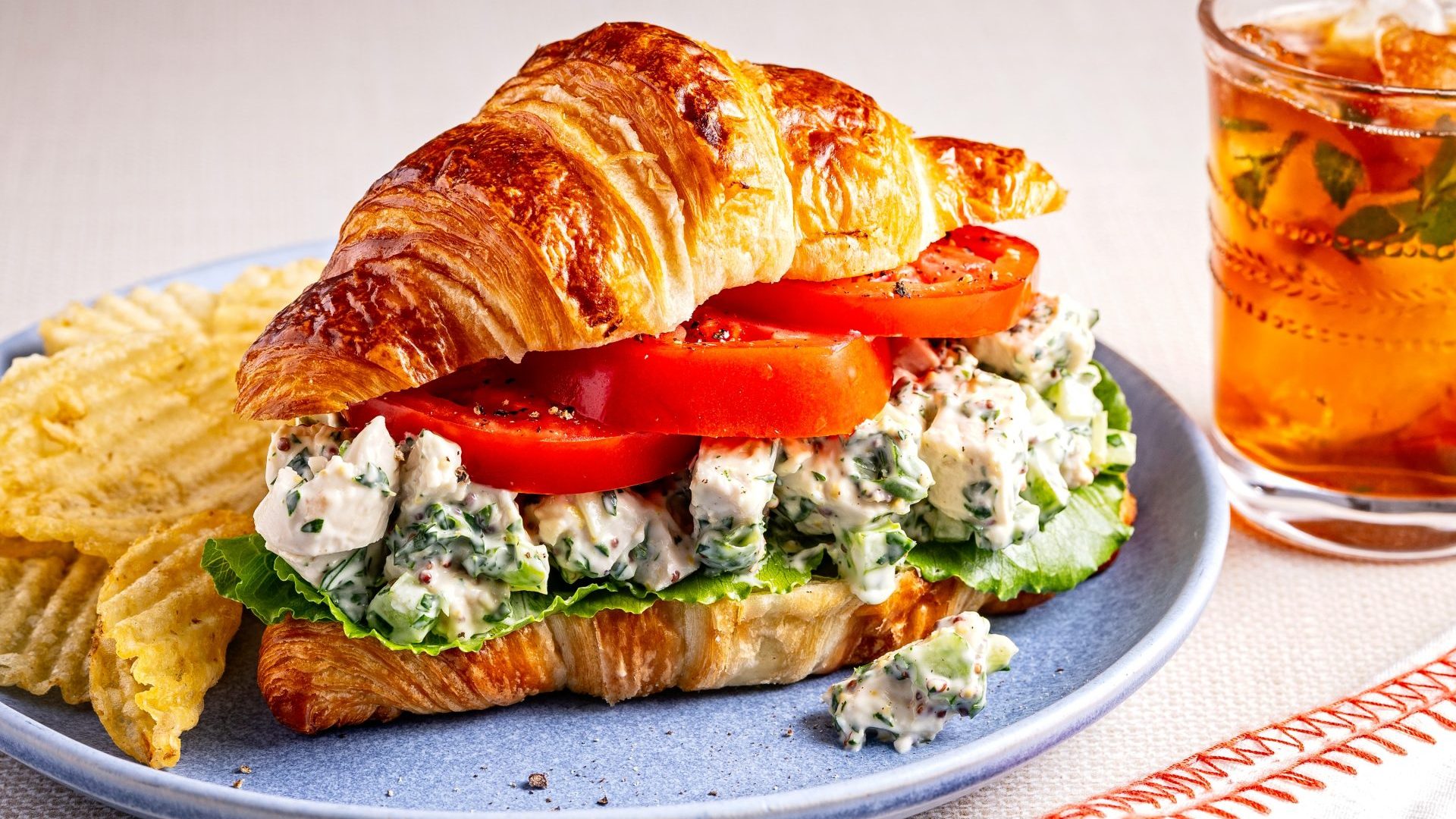Something is happening to croissants. One of Europe’s most famous foods that we have grown to worship – almost as much as they are across the Channel – are being remixed, rewired, filled with this and that, generally mucked about with. Whatever will the French say?
Because what could be more quintessentially French than the deliciously laminated dough, in its long, layered pillow, its very name a Gallic whisper? Except, the croissant may not really be French after all.
You may have heard the stories of bread being baked in a crescent on the streets of Budapest or Vienna, to either signal the presence of or to celebrate the removal of Islamic or Ottoman invaders with that shape on their flags.
You can definitively trace the croissant’s origins back to the 13th century and the old viennoiseries of Austria, when the kipferl – a crescent moon roll of yeasted wheat dough with tapered ends – became everybody’s morning choice. The French then moved things on a bit, possibly as a result of Vienna-born Marie Antoinette hankering for home comforts, although that bit sounds too good to be true.
What is more likely to have happened is this: Before Marie was even born, the French had developed the idea of a light dough, buttered and folded several times to produce the famed consistency. But they used it as a case for other delights rather than a delight in itself.
The Austrian who really matters in this origin story is the military officer-turned-baker (and future newspaper publisher) August Zang, who opened his Boulangerie Viennoise on rue de Richelieu, close to the Jardin du Palais Royal in the late 1830s. Carting a steam oven with him from Vienna, it seems to have been Zang who combined puff pastry of French design with a modified kipferl shape.
“Let them eat croissants,” Marie Antoinette might have said, but for
the fact that she was dead, and hadn’t said “Qu’ils mangent de la brioche”
in the first place. But eat croissants we did.
Some were filled with ham and cheese and toasted to become a buttery lunch; others were filled with chocolate and called a different name; those unsold were injected with frangipane and topped with toasted almonds before being baked again for the next morning.
Mostly, though, croissants were what they were designed to be: buttery, flaky pastries of delicate design, difficult to make and even harder to master. Puff pastry in its purest, most decadent form. And utter perfection with a coffee.
But lately, food trends have taken a dramatic turn, with croissant dough becoming the latest medium for outlandish culinary experiments. Shops in Berlin have started stuffing croissants with inelegant flaps of doner meat, while Milan hotspot Aroma Napoletana puts just about anything inside the folds of puff pastry.
The UK is feverish too. This year, Chai Guys in London gave croissants the samosa treatment, quite superbly, filling theirs with a spiced blend of potatoes and peas. In Lyme Regis, pastries inspired by the Middle Eastern dish shakshuka, where eggs are baked in a spiced tomato sauce, have been on sale for £4.30. I saw a croissant sausage roll not so long ago.
It is not only fillings, but shape and size. Giant “XXL croissants” at Philippe Conticini have taken social media by storm. No matter that their enormity probably renders the eating experience ridiculous and lesser in quality.
The Robuchon group of bakeries crafted cubed croissants, dubbed “Le Cube”, the laminated dough tighter, crispy on the outside but fluffy and soft within; a Rubik’s Cube à la Français. And on tasting menus the
UK over, chefs are giving diners croissant courses: after sea bass tartare, a punctuation point to enjoy fine French pâtisserie before moving on to heavier meat.
On the menu now at Lyla in Edinburgh, between a dish of smoked trout chawanmushi and another of squid spaghetti (a big trend: see my recent column from Alba) in the richest of onion broths, is “Laminated brioche, ampersand butter, koji and wild garlic”. The head chef Scott Ralston says of the course: “We just want to give diners lots of butter. Proper butter. And there’s no better way than with a croissant.”
At Fallow in London, there’s now a whole breakfast menu dedicated to croissants, dubbed “royales”. Circular, muffin-shaped versions are served as sandwiches. One is filled with a sausage patty, fried egg, bacon, cheese and walnut ketchup, another with smoked salmon and hollandaise. Or there’s croissant French toast with caramel and whipped cream. “Naughty” and “spectacular” are how numerous diners have described them.
We might journey back 10 years to find the origin story of all this demented, often wonderful pastry. Then, the legendary New York bakery Dominique Ansel invented the cronut, marrying croissant and doughnut, and thereby sending Americans completely wild. Europe lapped it up. More recently, the exuberant French pâtissier Cédric Grolet made a croissant king cake, paying homage to the galette des rois which is eaten in France for Epiphany. And there have been croissant tacos, croissant pretzels, cruffins, cragels, brissants. Most are self-explanatory but the last one probably isn’t: a croissant and Italian brioche hybrid baked at Angelina, also in New York, and which is fluffy but deleteriously sweet.
As much as experimentation and inventiveness have impacted croissants, it is not always style over substance. Outlandishness has fuelled the craze but so too has a more earnest look at baking in Britain, with the likes of Pollen in Manchester, Landrace in Bath, and Lannan in Edinburgh, from baker of the moment Darcie Maher, tapping into “artisan” with aplomb.
Another of these, Pophams, makes some of London’s best croissants, and has been doing so since launching seven years ago.
Founder Ollie Gold told me the boom has been “wild”. He says: “Seeing the adventurous stuff is fun, and the crazier the better I think, but we’ve tried to be innovative in another way: to take the basic premise of the croissant and get it right.
“We set out on a croissant journey seven years ago and have experimented, learned, shaped and evolved. A croissant is more than laminated dough and butter. That’s the concept, but it’s down to butter, flour, size, oven, everything. Croissants are an exact science.”
Gold says he agrees with the common sentiment that lockdown fuelled a greater demand for higher-quality baking in the UK. People still buy £1 croissants from Lidl – the German discount supermarket sells 122 every second – but there is also more respect for those who work tirelessly to produce the very best products.
Croissants are labour-intensive and it might be the fundamentals they enjoy more. Take Popham’s lemon and poppy seed croissant, more a pudding and served in the cafe rather than to take away. It is buoyed by lemon posset and topped with flame-licked meringue.
“People seem to want to support indies more,” says Gold, “and they’re usually the ones having the most fun, being the most agile and flexible and modern. Of course they’re more expensive, the cost of ingredients is still astronomical, but people love to be part of a baking community. Many are built on the simple joy of croissants. Ours definitely is.”
Alongside Popham’s are names such as Dusty Knuckle, Fortitude Bakehouse, E5, Eric’s, Tarn, Lockdown Bakehouse, Kuro and Casey’s, all of which bake croissants superior to those that came before. At each, it might be that croissants are an obsession and a pride – each a technical masterstroke where the structure is precise and flavour is balanced.
Another, Toad in south London, has daily queues, often caused by fanciful croissants. Recently, the bakery partnered with hit Italian restaurant Forza to create cacio e pepe spaghetti croissants, and many will be hoping the Yule hog makes a comeback: a pastry filled with pork belly, prunes, red cabbage kraut and melted cheddar. It is a curved, glistening bake topped happily with a guindilla pepper.
All this has been a part of a bigger story. The global croissant market has been soaring for some time: it was worth £6bn in 2023 but is expected to reach more than £7bn by 2027. It’s no wonder croissant chat on social media increased by more than 5% in the past year, while the hashtag “croissant” has been viewed more than 7.5 billion times so far in 2024.
Milly Kenny Ryder, author of Britain’s Best Bakeries, welcomes the trend. She thinks part of the boom is down to the fact that croissants are an “affordable luxury”, itself a trend in modern Britain driven by the fact that so many millennials can’t buy houses but can buy excellent pastry.
Ryder points out that despite all the new variants and mutations, the simple croissant itself is complex enough: “Croissants are adventurous, or can be, as we’ve seen more and more, but still always familiar. We can’t really make them at home – who has the time, even if they have the skill?
“I charted 62 bakers in my book, all with different styles and techniques, and all still making amazing croissants. The skill behind croissants is remarkable. There are minute details that are crucial – I know a lot of bakeries that buy French butter because it has a higher fat content, and they have played around with temperature for years to get the rise just right. Classic white flour might be replaced with a darker grain now, which is also really interesting.
“I also think everyone has their own story with croissants. They’ve been around for ever and pretty much everyone loves them. We used to dip croissants in warm chocolate.”
Croissants are a life-affirming pleasure. One that feels like it has always been here, but which is here more than ever now, from crescent moons in plastic and made with margarine, to those of darker, funkier flours and baked until golden and crisp and sold for £4-plus.
As for me, I eat my croissants warm with Petit Filous, as was always the way as a child in France. Alongside bacon and eggs, there is no breakfast better.




